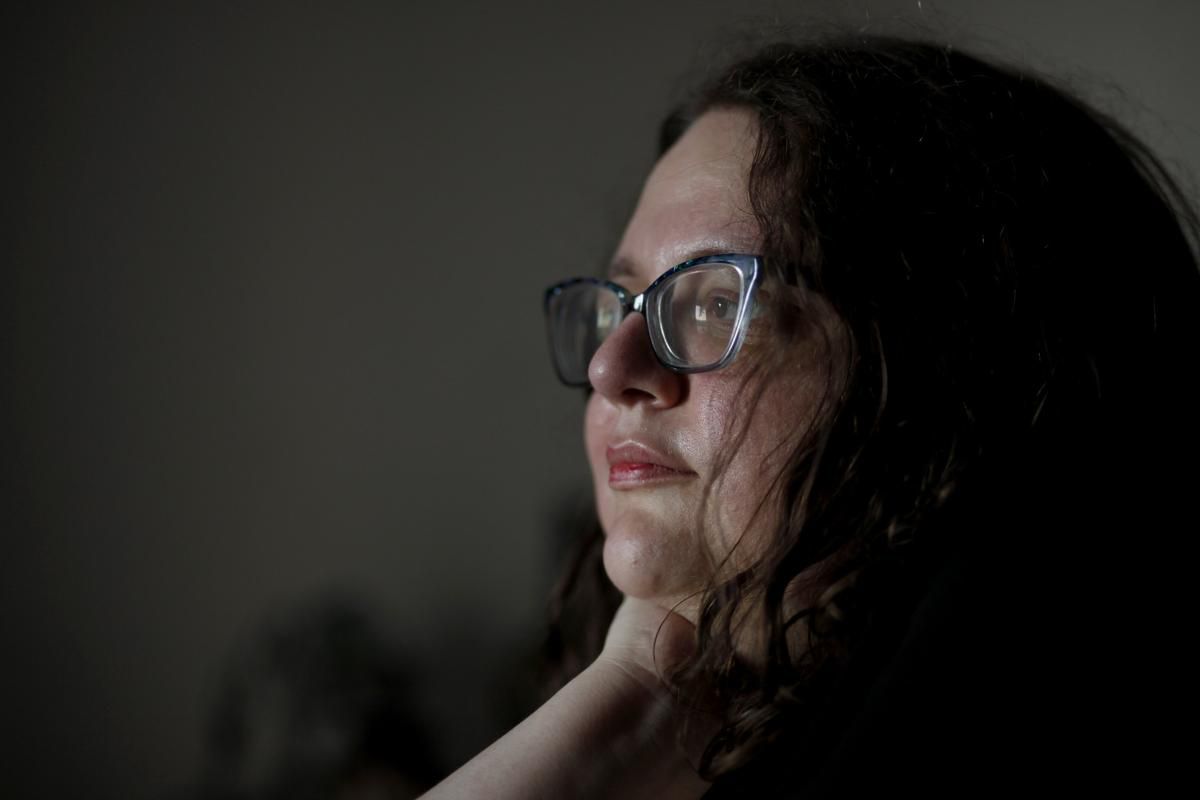VICTORIA—Amber Goss had set an early alarm, but in the end she didn’t need it.
An internal alarm clock was at work, rousing her with butterflies in her stomach and thoughts of being first in line when a primary-care clinic in her city started accepting new patients.
If she could just secure a spot, it would end a three-year-long search for a primary care provider in Victoria, B.C. She could finally have a relationship with someone who knew and understood her chronic health conditions, and could offer her help not just for a day, but for the long haul.
At 8 a.m., Goss was ready. The website wasn’t. By 8:01 a.m., it had crashed.
It stayed down all day.
“I had a kind of ‘Oh well, that’s 2020’ moment,” she said. “I was surprised at how long the website was down. But when I thought about it I thought, ‘This is a clinic website, this is not a site that’s designed for high traffic.’”
The incident underscored a reality across Canada today: Five million Canadians, like Goss, don’t have a family doctor — but that doesn’t mean they’re being left out in the cold.
Those patients, and others, are increasingly willing to meet their doctors and other care providers online, the way they have been interacting with their banks and travel-booking services for more than a decade.
While individual doctors and clinics catch up on how to provide virtual visits for the first time, one of Canada’s largest telecommunications companies has moved to fill the gap, working with a U.K. tech company with the lofty goal of using technology to make health care accessible to everyone.
Goss was an early user of Babylon by Telus Health, learning about the phone application from ubiquitous ads featuring smiling doctors and patients plastered throughout bus stops and social media. is The app has essentially worked as a virtual walk-in clinic in British Columbia since March 2019.
It’s a private clinic, funded publicly by billing B.C.’s medical services plan and the plans of other provinces, much like the way many private brick-and-mortar clinics charge the Ontario Health Insurance Plan (OHIP).
Patients can use their provincial health numbers to make virtual appointments with a doctor over the app at any time of day. Goss has used it to refill prescriptions at the last minute. And when her fibromyalgia, a chronic pain condition, has made it too difficult for her to get up and take a 40-minute bus ride to the clinic she has used, it’s been a game-changer.
“There were a couple times when getting out (to the campus clinic) just wasn’t an option, but I could still get my prescription refilled,” she said. “It fills a gap, it’s fantastic. But for long-term care, not so much.”
Ever since Goss moved to Victoria three years ago, she’s been looking for a regular care provider. Fibromyalgia can be tricky to manage even if the doctor on the case has all of her medical history in front of them.
For a short period, she had access to a doctor through the University of Victoria campus clinic, where she used to be student. But now she’s been casting around for a regular care provider, relying on walk-in clinics and, more recently, electronic services though her phone.
Doctors, researchers and patients agree that virtual care — any way of using technology to communicate with a care provider — could play an important role in expanding access to high-quality care across the country. Due more to systemic inertia than technological lag, Canadian doctors are only now arriving to the technological age.
While the Canadian Medical Association was crafting a task force report on virtual care, Telus Health — a wing of the telecommunications giant — was doing what the private sector does best: Outracing the public sector. Telus responded to demand for a service, made adjustments along the way, and created something people would use.
Once city dwellers could hire a car from their cellphones, it became a convenience hard to live without. Likewise, Telus Health (and, other players, such as the Maple app, which started in Ontario) are setting standards for convenience that many independent clinics can’t compete with yet, and due to new policies brought in during the COVID-19 pandemic, it’s been able to multiply tenfold — expanding into Alberta, Saskatchewan, Ontario and Quebec since the pandemic began.
The entrance of this technology into Canadian health care is changing patients’ expectations. This is raising alarm bells, particularly among B.C. family doctors, who watched as Telus Health encroached on an industry traditionally dominated by their own private practices.
Suddenly there was a massive telecommunications company promising visits 24/7 through a smartphone app. Few independent clinics could offer that.
“By no means are these bad doctors, and by no means is the tool a bad tool,” said Renee Fernandez, the Richmond family doctor who serves as the executive director of Family Doctors of B.C., the advocacy group representing primary care physicians in the province.
In fact, the doctors working for Babylon are B.C. family doctors just like her, who run practices and serve patients over long periods of time, picking up Babylon shifts for extra money.
What Fernandez worries about is that something like Babylon, which offers one-off interactions with a doctor rather than a long-term relationship, could begin to dominate the virtual health field over relationship-based care, which is associated with better and safer outcomes for patients in the long term, according to research released by the Canadian College of Family Physicians.
“The regulation and the proactive policies to discuss and think about how this fits into the system has not quite caught up,” Fernandez said. “We do want to think about — if the college has said it is impossible to deliver quality care via a completely virtual platform, how does this fit in the care ecosystem?”
It’s a transformation requiring action at every level of our health-care systems — from private practices setting up secure video chatting tools to provincial governments implementing new models for how to pay doctors who see patients online.
That makes the coming months crucial. Systems for retaining patient information typically differ from doctor’s office to doctor’s office, hospital to hospital, with patients leaving a disparate paper trail of crucial information used to make decisions about their health every place they go (transmitted, too often, by fax).
In order for virtual care to realize its potential to increase accessibility, efficiency and patients’ autonomy over their own data, experts say a co-ordinated effort to redesign how patients and care providers meet, communicate and store information is needed now.
A virtual care task force struck by the Canadian Medical Association, which released its final report just weeks before the pandemic was declared, put the concern into plain terms.
“If medical practices are truly patient centred, virtual care needs to respond to patient demand for convenient access, on patients’ terms,” a portion of the report reads. “Failing that, many patients may opt for the private virtual walk-in clinics.”
Fernandez said the solution needs to involve effectively implementing virtual-care options that work in conjunction with family doctors, so patients can, say, have a conversation about renewing prescriptions over video and plan an in-person Pap test with the same care provider. But episodic options such as Babylon could still play an important role, especially for patients such as Goss.
“Personally, I would say that Amber is absolutely right. She needs to have health care services in the interim until she can have a family doctor,” Fernandez said. “Right now, virtual care and walk-in are the solutions that are available.”
Telus has been pushing as hard on this front as perhaps any other company in Canada. In June the company reported having poured over $3 billion into its health subsidiary, a move toward “transforming Canada’s health care sector,” it said.
Juggy Sihota, Telus’ Vancouver-based vice-president of consumer health, said the impetus for the Babylon partnership was the fact that many of the millions of Canadians without a family doctor would be willing or even happy to have access to certain medical services online.
“We thought: We can leverage technology to be able to deliver health care services,” Sihota said. “We knew the public sector would not be able to solve all those problems by themselves.”
Loading…
Loading…Loading…Loading…Loading…Loading…
So they partnered with Babylon, a British technology company that provides a platform for virtual doctor’s visits as well as an AI-assisted bot for symptom checking. Then they began hiring doctors to launch a virtual clinic in B.C. — starting there because it its funding model already let doctors bill for virtual visits.
Then, less than a year after the app launched in the province, the pandemic hit.
“We were planning to meet with each government and make the case. We were planning to go province by province,” Sihota said. “When COVID-19 came about, all of a sudden nobody could go see their own doctor. Necessity is the mother of invention.”
Practically overnight, provinces quickly implementing fee codes letting doctors bill for virtual visits and it became possible for the service to expand into Alberta, Saskatchewan, and Ontario. They just added Quebec. Use of Babylon increased tenfold over the course of the pandemic, Sihota said; a doctor’s visit is happening on the app every 30 seconds in Canada.
Sihota said the intention is not to replace family doctor visits, but to supplement the system, with records from any virtual visits sent to the patient’s family doctor. She said the feedback from patients reaching out to her has been positive.
“(The system) just hadn’t modernized, and then COVID hit,” she said. “COVID-19 was the catalyst, and certainly an accelerant across the country … Now there’s no turning back.”
The medical community agrees. According to Dr. Sacha Bhatia, a Women’s College Hospital cardiologist who has researched the topic for the C.D. Howe Institute, one in three Ontarians have received some sort of virtual care since the beginning of the pandemic, and at the peak, 77 per cent of contact with Ontario physicians was happening virtually. A total of 90 per cent of doctors billed some kind of virtual visit during the pandemic’s first wave.
“Canadian health care has been slow to adopt virtual tools and virtual care,” Bhatia said. “This shows that the public system can change — under duress.” In an article he co-authored on virtual care in Ontario, he wrote “decades of prediction have come true in a single month.”
Now, Bhatia said, provinces need to be asking questions about how to build a regulatory environment around virtual care — one that sets standards for virtual care that are at the same level as in-person care, and ensures patient data is protected.
This is something Ewan Affleck, a Yellowknife doctor who co-chaired the CMA task force on virtual care, has spent his career thinking about.
Having worked across Canada’s North, Affleck has been on the front lines in scenarios where communicating with patients through a satellite phone was the closest he’s been able to come to them. It’s given him a particular perspective on what health care really is — to him, it’s an information system.
When a patient comes to Affleck, everything that happens — conversation, tests, physical examination — it’s all information about that person’s health, which becomes the “raw material” Affleck uses to make decisions and recommendations.
Introducing virtual care into Canada’s system is a chance to redesign the entire system — the channels through which the information flows, and, crucially, who owns that information when it is stored.
“There’s a huge opportunity to provide more equitable and sound care, and for patients to really take ownership of their care,” he said. “And the health information is the raw material we work with to provide all care.”
Which tools are used, and whether the technology comes from the private sector or the public sector is less important to Affleck than the principle that the best and most relevant health information is key to delivering quality care. He wants to see Canada’s health care players design a system that lets the information flow effectively between providers and patients, whether it’s about one-time prescription refill over Babylon, or a long-term consultation over a necessary surgery.
“If we were to do this all again, the technology is one of the easiest parts to do. The more challenging issue is designing a forward-thinking digital health environment,” he said.
A 1992 Supreme Court decision in McInerney v Macdonald found patients, not their health-care providers, are the owners of their health-care information. But typically, that information has been held in the form of charts by multiple providers.
The shift to virtual care raises important questions about how patient data will be held and shared. Affleck is encouraged that, at this point in time, there’s an opportunity for governments to implement new regulations to put patients in control of their own health information and streamline the information’s storage and flow, which could help care providers improve their services.
“It’s exciting now that there seems to be a willingness to reimagine health care,” he said. He laughed, thinking about the work of the task force and how, when the report was completed, he had every expectation that it would be shelved. Now he’s getting calls on it weekly.
“Really what has been needed is the value proposition of virtual care needs to be demonstrated,” he said. “It took a virus to demonstrate that.”
The notion of health care information that is owned by and moves around with the patient appeals to people like Goss. She recalled how, every time she met a new doctor, she found herself repeating the same questions and tests over and over. She joked that she should get a T-shirt made listing the conditions that have already been ruled out by other doctors.
Even with more streamlined transmission of her health history, Goss knows that the best solution for her will involve having a relationship with one family doctor.
“There still needs to be more primary care providers because the number of clinics is not commensurate to the population,” she said. But she hopes the walk-in style options like Babylon stick around. “It’s not something I’m going to use frequently but it’s invaluable for what it does. And if more people can use that, it would take pressures off the clinics.”
One of those clinics, she hopes, will have room for her soon. The next time they are accepting new patients, she plans to line up in person or call rather than going online, even if that means a 40-minute bus ride.
JOIN THE CONVERSATION
Q:
What do you think about virtual healthcare? Share your thoughts below:




![[BREAKING] Crash between RTD train and car results in serious injury in Colorado](https://newsfortomorrow.com/wp-content/uploads/2021/04/BREAKING-Crash-between-RTD-train-and-car-results-in-serious-225x125.jpg)










